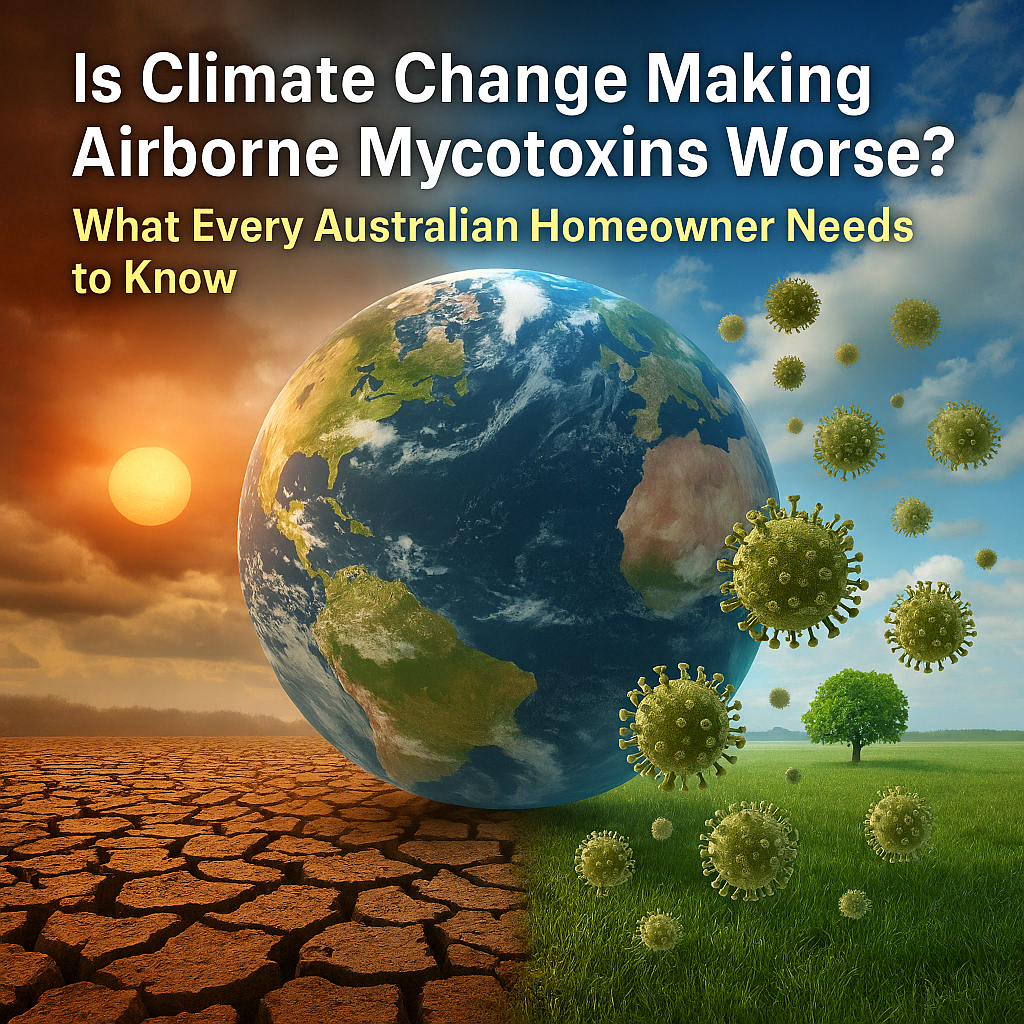
What Are the Hidden Health Risks of Living with Mould?
Mould is more than an unsightly nuisance—it can pose serious health risks. When mould spores become airborne, they release toxic compounds called mycotoxins. These invisible threats can compromise indoor air quality and trigger a range of health problems.
The Mould Group, experts in indoor air quality and mould remediation, warn that prolonged exposure to mould can lead to chronic health conditions. Understanding the risks and taking action is crucial for maintaining a healthy home environment.
How Can Airborne Mycotoxins from Mould Affect Your Health?
Exposure to airborne mycotoxins can cause a variety of health issues. Symptoms may include respiratory problems, skin irritation, and neurological effects such as headaches and brain fog.
For individuals with weakened immune systems, mould exposure can be even more dangerous, leading to severe infections and long-term health complications. Studies have linked airborne mycotoxins to chronic inflammatory conditions, making it essential to address mould issues promptly.
What Environmental Conditions Encourage Mould Growth Indoors?
Mould thrives in damp, poorly ventilated environments. High humidity, water leaks, and condensation provide the perfect breeding ground for mould spores.
Homes with inadequate ventilation, particularly in bathrooms and kitchens, are especially vulnerable. Organic materials such as wood, carpet, and drywall can also serve as food sources for mould growth, allowing it to spread rapidly.
How Can You Test for Airborne Mycotoxins in Your Home?
Testing for airborne mycotoxins is essential for assessing indoor air quality. Professional mould inspectors use advanced testing methods such as air sampling and surface swabs to detect the presence of mycotoxins.
DIY testing kits are available, but they may not provide accurate results. For a comprehensive analysis, it is best to consult specialists like The Mould Group, who can identify hidden mould sources and recommend appropriate remediation strategies.
What Are the Most Effective Ways to Remove Mould and Airborne Mycotoxins?
Mould removal requires more than just scrubbing visible growth. Effective remediation involves identifying and eliminating the moisture source to prevent regrowth.
Professional mould remediation services use HEPA filtration, antimicrobial treatments, and negative air pressure systems to safely remove mould and airborne mycotoxins. Attempting DIY mould removal with bleach or household cleaners can worsen the problem by releasing more spores into the air.
How Can You Prevent Mould Growth and Protect Your Health?
Preventing mould growth starts with controlling indoor moisture levels. Using dehumidifiers, ensuring proper ventilation, and promptly fixing leaks can significantly reduce the risk of mould development.
Regular home inspections and proactive maintenance can help detect and address moisture issues before they escalate. Keeping indoor humidity below 50% is a key factor in mould prevention.
Who Is Most at Risk from Exposure to Airborne Mycotoxins?
Certain individuals are more vulnerable to the health effects of mould. These include children, the elderly, individuals with asthma or allergies, and those with compromised immune systems.
Pets can also be affected, as they spend time close to the ground where mould spores tend to settle. Recognising the symptoms of mould exposure early can help protect the most vulnerable members of your household.
Why Is Indoor Air Quality Important in Preventing Mould-Related Illnesses?
As we discussed in How Airborne Mycotoxins Affect Indoor Air Quality, poor ventilation and moisture buildup contribute to mould-related health risks.
Ensuring good air circulation and using air purifiers with HEPA filters can help remove mould spores and mycotoxins from indoor environments. Understanding the relationship between air quality and health is crucial for long-term well-being.
Why Is Testing for Airborne Mycotoxins Essential for Your Health?
Many homeowners are unaware of the hidden dangers lurking in their air. Our next article, Testing for Airborne Mycotoxins: Why It’s Critical, will explore how to identify these invisible threats and protect your home and health.
📝 Next blog in this series: Testing for Airborne Mycotoxins: Why It’s Critical.
If you suspect mould in your home, don’t wait for health problems to develop. Book a professional inspection with The Mould Group today to ensure a safe and healthy living environment.
Meta Description: Exposure to mould can cause respiratory issues, allergies, and chronic health conditions. Learn about the hidden health risks of living with mould and how to protect your home.
Recent Post
Emerging Research
Are Airborne Aflatoxins More Dangerous Than We Thought? Emerging Research Reveals the Unknowns Introduction Mould is not just a cosmetic nuisance. It’s a living organism that, when left unchecked, releases toxic by-products into your environment. One of the most concerning of these by-products is aflatoxin—a dangerous type of airborne mycotoxin. While we know that ingesting […]
Climate Change and Airborne Mycotoxins
Is Climate Change Making Airborne Mycotoxins Worse? What Every Australian Homeowner Needs to Know Introduction Mould is more than just an unsightly problem—it’s a biological hazard that can compromise your health and damage your property. As it grows, it can release dangerous toxins into the air called mycotoxins. When these mycotoxins become airborne, they can […]
Airborne Aflatoxins and Animals
Are Your Pets or Livestock at Risk? Understanding Airborne Aflatoxins and Animals Introduction Mould is not just a concern for homes and people—it also poses a serious threat to animals. When mould spreads in barns, sheds, feed storage areas, or even inside homes, it can release aflatoxins—a dangerous type of airborne mycotoxin. These toxins can […]




